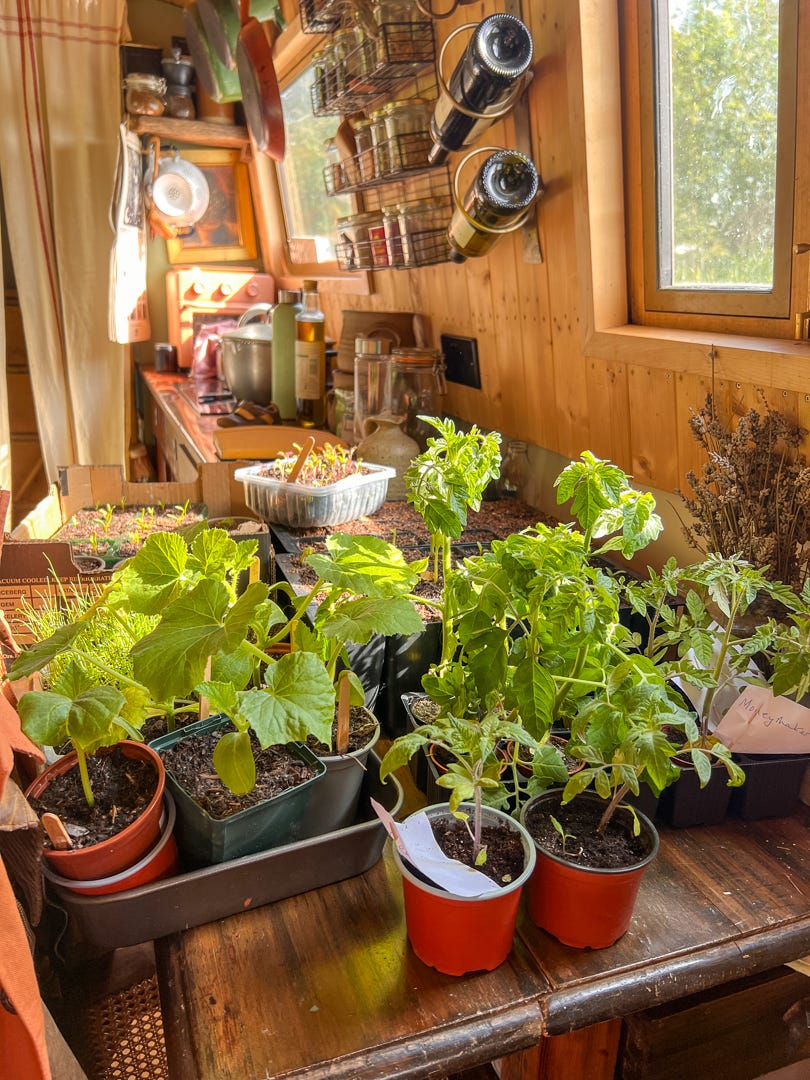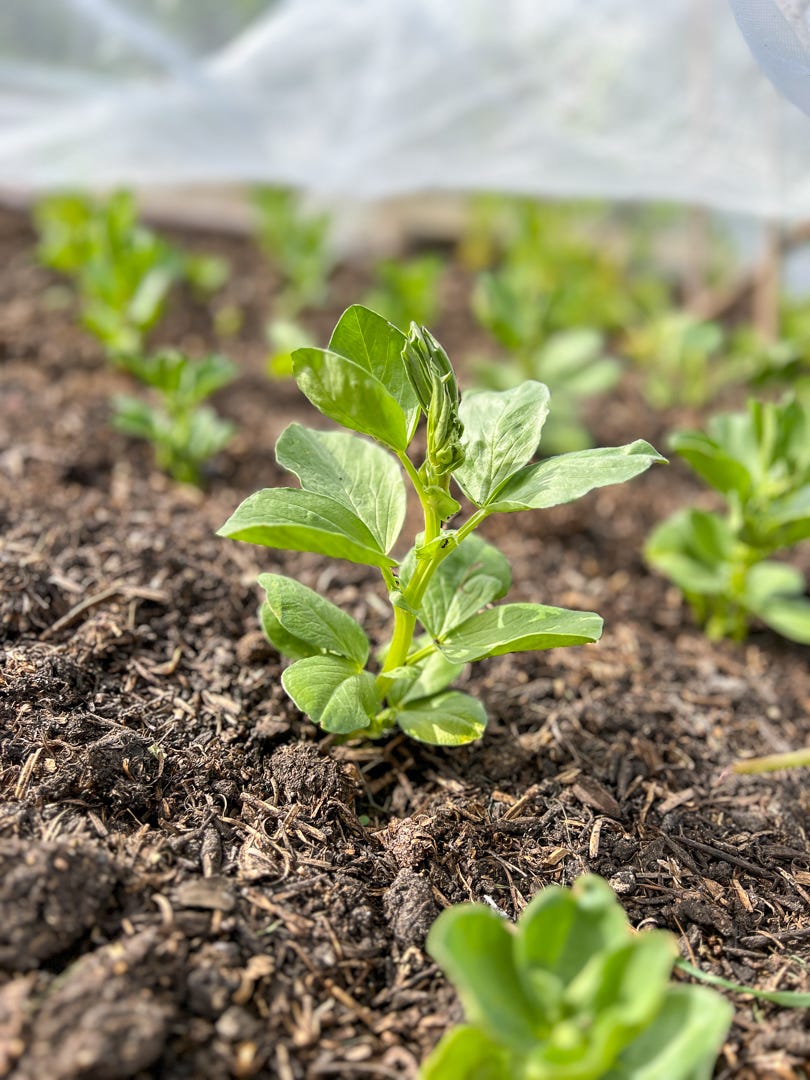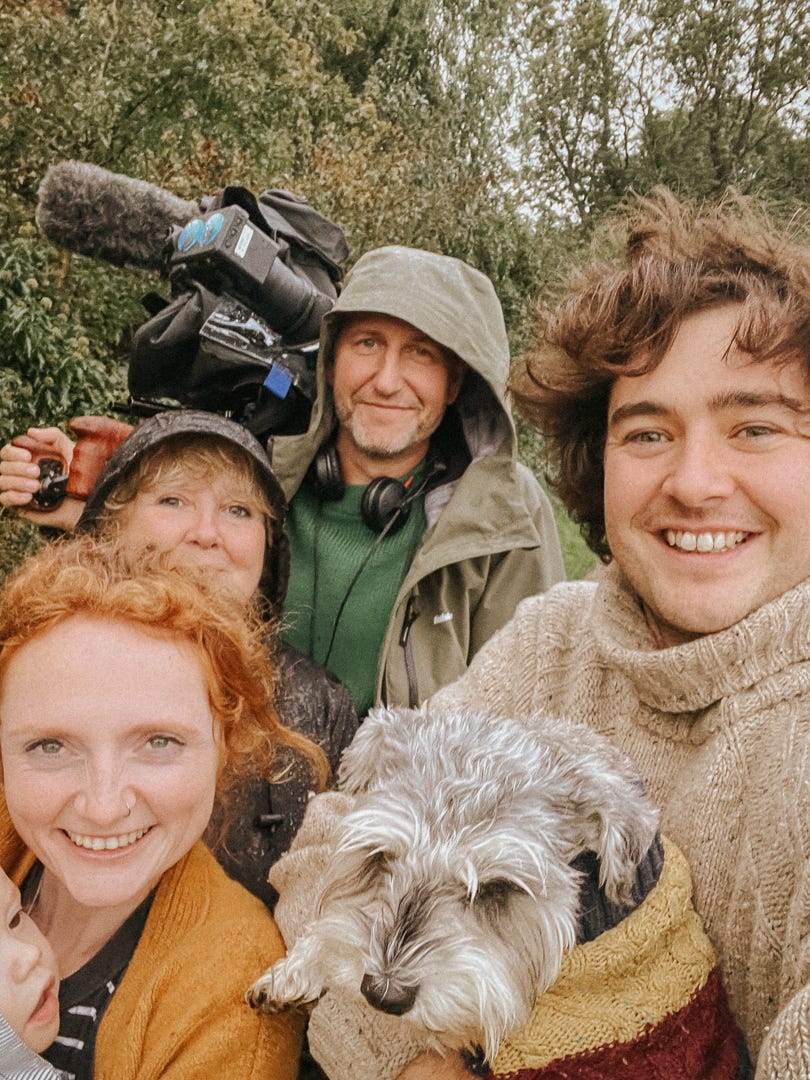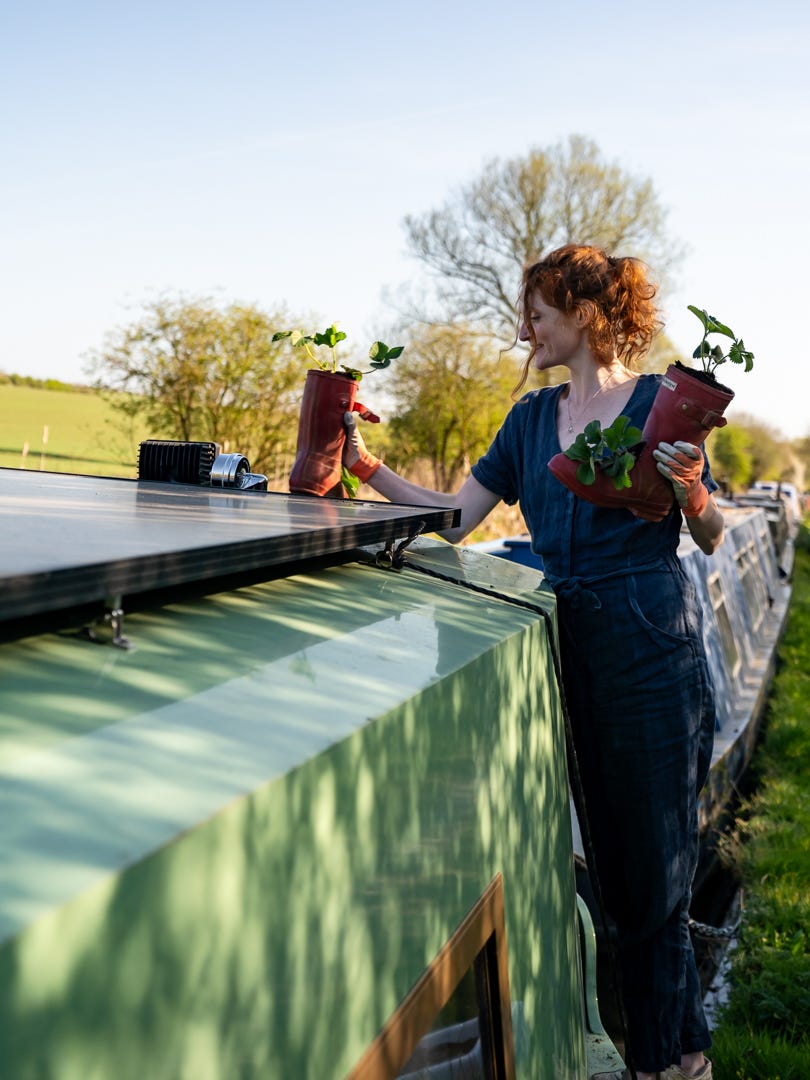Sunshine, swarms and strawberry-filled wellies
A spring ramble from the towpath — golden evenings, buzzing hives, and a bit of exciting news from our floating home.
I have a challenge for you…
I need your help. Can we devise a word that captures the contentedly joyful feeling that washes over your soul when basking in spring sunshine? More specifically, when basking in the cidery golden lazing light of gentle spring evenings?
A few little moments from these primaveral days
In winter, we have apricity — a charming word for the joy of feeling the sun on a cold day. But what about now? April-iticty? May-gical days? Frolicking in the spring-shine? I’ll be honest, I don’t think any of mine quite hit the mark. They’re neither wholesome nor romantic enough for the season. So, I’m passing the baton to you. Suggestions in the comments, please!
Last evening, I experienced exactly this feeling. Taking Tilly for a slow mooch along the towpath, I was simply spellbound by the light. The ducks, the bridges, the trees that line the bank, the flowing cow parsley - they all had this special glow that looked as though they’d been dipped in gold. The sort of honeyed light that whispers all is well in the world.
Floating Garden
The warmth has prompted a flurry of activity. Our little floating home currently resembles more of a plant nursery than a narrowboat (for those new here, we live full-time on a narrowboat on the British canals). As I write this, my laptop is jostling for space at our tiny kitchen table alongside seedling trays of runner beans, mixed lettuce, courgettes, cucumbers, a lively selection of tomato plants and many, many others. All are waiting for the evenings to warm before I can set them loose into the world.

Outside, we’ve been busy too. The stern has had a little makeover, in what we’re calling our kitchen garden. Or at least as much of a kitchen garden as you can have on a narrowboat, which mostly means lots of potted herbs and anything that we can bung into any form of container.
For the first time in four years of our stewardship, our potted gooseberry bush actually has a few berries on it. We’ve also added some new recruits to our “welly berries” — the name we give to the strawberries we plant in our old, disused boots and wellingtons. Gabby’s pair developed a leak over the winter, so I’ve gleefully repurposed them to house a couple of Cambridge Favourite strawberry plants. Give us a few years and we’ll practically be running a PYO farm.
Spring's Abundance (and Challenges)
There is such joy in this time of year, and this spring has felt especially vibrant. It’s been unusually warm — temperatures even reached 26°C last Thursday — and everything seems to be thriving. I’ve seen my first pairs of swallows and swifts, baby moorhens have begun to emerge from the reeds opposite our boat, and the family of hares that live in the field beyond our mooring seem to have had a bumper crop, with three playful leverets darting about at dusk.

At the allotments, though, things are a little less bountiful. We’re desperately hoping for some rain to top up the water butts. There’s no mains supply, so we rely on various barrels piped into the guttering from the greenhouses and sheds dotted around the gardens. All of them are running low, and my broad beans are looking a bit thirsty. I’m beginning to think that no matter the weather, we grow-it-yourselfers will always have something to mither about.
Inside the Hive
The sunshine has also allowed my bees to get off to a flying start. I mean that both as a pun and, unfortunately, literally.
Spring is swarm season. It sounds a bit alarming, but it’s actually a completely natural part of a honeybee colony’s reproductive cycle. I won’t go into too much detail here, but essentially it’s when a single colony splits in two. The old queen leaves the hive with about half the worker bees to find a new home, while a new queen takes over the original colony. It’s nature’s way of helping the species expand and thrive.
For us beekeepers, though, a swarm isn’t ideal. It leaves the original hive weakened, and you could lose a productive, gentle queen for a replacement that’s more aggressive or less fertile. So it’s not just a numbers game. With a little hive management, you can usually prevent a swarm, but I was caught off guard this year. Swarm season typically begins in May, but thanks to the unseasonably mild weather, the bees got a head start.
During an April inspection, I spotted a few new queen cells but didn’t have the right equipment with me to intervene. When I returned a few days later, the colony had already swarmed, helping themselves to a final feast of honey before they left and leaving only the younger nurse bees to care for the unhatched larvae. Lesson learnt!
a few forager bees returning to the new hive
Fortunately, there were a couple of very handsome-looking queen cells still developing. With the nectar flow in full swing thanks to the warm weather, I decided to take a bit of a risk and split the hive — essentially creating a second colony by moving some of the younger bees and one of the queen cells into a new hive box. Two weeks later, both colonies are looking strong, the bees seem happy, and I am now the proud (and slightly surprised) owner of two hives instead of one.
Some News
I do have a little something extra to share — and it’s something Gabby and I are really excited to finally be able to tell you about!

Last year, we had the chance to be part of a lovely TV programme called Narrow Escapes, which follows the lives of people who live on the waterways. We popped up in Series 1 a couple of years back, and somehow they asked us back again for Series 2.
It was a real treat to be involved. The team were just brilliant, and it was a bit surreal having cameras around again. At the end of our bit in Series 1, we’d just shared the news that we were expecting… And now that tiny bump is a very busy one-and-a-half-year-old who spends most of his time trying to escape the boat by any means possible.
I’ve no idea what bits of our lives will actually make it onto the telly — though fingers crossed there’s a glimpse of the allotment, and the evening we cooked a meal on the towpath using just what we’d grown ourselves.
If you’re after something gentle to watch after a day in the garden (or pottering about making your own welly berries), the series is on Channel 4 in the UK and available here. One of the best things about living on the water is the people, and they’ve done a lovely job of capturing just how varied and welcoming this little world can be.
Let me know if you do catch the show and I hope you enjoy it. I think Gabby and I will be in a couple of episodes from the 26th of May. And if you find yourself outside in this golden light, with the bees buzzing and the cow parsley swaying, and a word suddenly comes to you that captures that feeling… well, you know where to find me.
Thanks for reading, and see you soon.
Jack x











'Emergent' perhaps?
"euphoria," which captures a sense of joy and bliss in the moment.